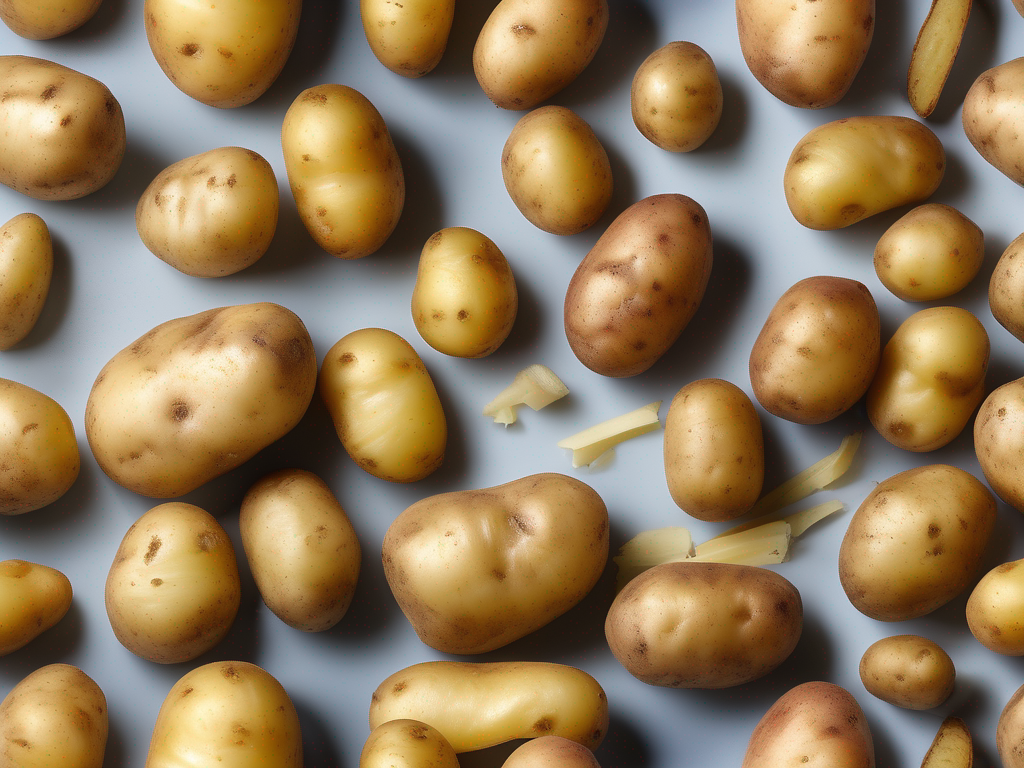
Signs that Potatoes are no Longer Safe to Eat
Signs that Potatoes are no Longer Safe to Eat
Potatoes are a versatile and nutritious vegetable that can be enjoyed in various dishes. However, like any perishable food item, potatoes can spoil over time, leading to potential health risks if consumed. It is essential to know the signs that indicate potatoes are no longer safe to eat to prevent foodborne illnesses. In this blog post, we will discuss the key indicators that your potatoes have gone bad and provide tips on how to store them correctly to extend their shelf life. (Potatoes)
Understanding Potato Spoilage
Potatoes can spoil due to various factors, including improper storage, exposure to moisture, and bacterial contamination. When potatoes start to go bad, they may develop visible signs that indicate they are no longer safe to eat. It is crucial to inspect your potatoes regularly and discard any that show signs of spoilage to avoid consuming contaminated food.
Signs that Potatoes are No Longer Safe to Eat
Here are the key indicators that your potatoes have gone bad:
-
Visible Mold: Mold growth on the surface of potatoes is a clear sign of spoilage. Mold can spread quickly and release toxins that can be harmful if ingested. Discard any potatoes with visible mold growth immediately.
-
Sprouting: Potatoes that have started to sprout or develop eyes are past their prime. Sprouting indicates that the potatoes are aging and may have a higher concentration of solanine, a natural toxin found in potatoes. Consuming sprouted potatoes can cause digestive issues and other health problems.
-
Soft or Spongy Texture: Healthy potatoes should feel firm and solid to the touch. If you notice that your potatoes have become soft, spongy, or mushy, it is a sign that they are no longer fresh and should be discarded.
-
Discoloration: Discoloration in potatoes, such as dark spots, browning, or a greenish hue, can indicate spoilage or the presence of solanine. Green spots in potatoes are particularly concerning, as they contain high levels of solanine, which can be toxic if consumed in large quantities.
-
Foul Odor: Spoiled potatoes may emit a foul smell, indicating the presence of bacteria or mold. If your potatoes have an unusual or unpleasant odor, it is best to throw them away to avoid foodborne illnesses.
Tips for Properly Storing Potatoes
To prolong the shelf life of your potatoes and prevent spoilage, follow these tips for proper storage:
- Cool and Dark Location: Store potatoes in a cool, dark place away from sunlight and heat sources. A pantry, cellar, or cool basement is ideal for storing potatoes.
- Ventilation: Potatoes need good air circulation to prevent moisture buildup and sprouting. Avoid storing potatoes in plastic bags or airtight containers. Instead, use a breathable storage bag or a paper bag with perforations.
- Separate from Onions: Do not store potatoes near onions, as onions release gases that can cause potatoes to spoil more quickly.
- Check Regularly: Inspect your potatoes regularly for signs of spoilage. Remove any potatoes that show mold, sprouting, or softness to prevent contamination of the rest of the batch.
- Do Not Wash Before Storing: Avoid washing potatoes before storage, as moisture can promote mold growth. Only wash potatoes right before cooking or consuming them.
By following these storage guidelines and being vigilant about the signs of spoilage, you can ensure that your potatoes remain safe to eat and enjoy them in your favorite dishes without any health concerns.
Conclusion
Knowing the signs that potatoes are no longer safe to eat is essential for maintaining food safety in your kitchen. By understanding the indicators of spoilage and following proper storage practices, you can prevent foodborne illnesses and enjoy fresh, healthy potatoes in your meals. Remember to inspect your potatoes regularly, discard any that show signs of spoilage, and store them in a cool, dark place with good ventilation to extend their shelf life. Prioritize food safety in your kitchen to protect yourself and your loved ones from consuming contaminated food. (Potatoes)
Authoritative Food Safety References
These agencies and university labs inform every tip and health precaution we publish.
USDA FoodKeeper – Cold Storage Guidelines
Official refrigerator, freezer, and pantry timelines maintained by the U.S. Department of Agriculture.
Visit USDA FoodKeeperFDA Produce Safety Rule & Grower Guidance
Field-to-fridge handling practices that prevent contamination of fruits, vegetables, and leafy greens.
Visit FDA Produce SafetyCDC Foodborne Illness Prevention Hub
Surveillance-backed guidance on pathogens, symptoms, and steps to reduce foodborne illness risk.
Visit CDC Food SafetyUC Davis Postharvest Technology Center
University research detailing optimal storage atmospheres for produce after harvest.
Visit UC Davis PostharvestPenn State Extension – Home Food Preservation & Safety
Peer-reviewed extension bulletins on safe canning, chilling, and reheating practices.
Visit Penn State ExtensionScan your food directly and get instant safety info using our AI-powered camera feature.